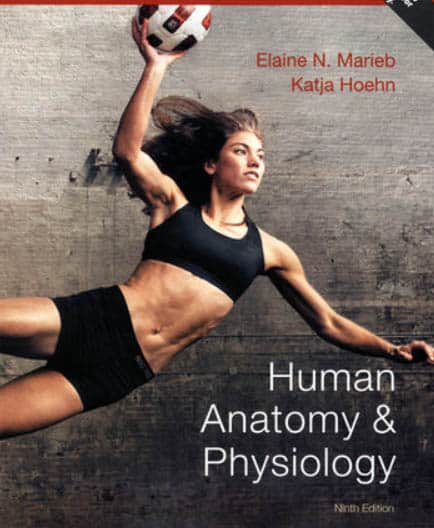What is the hermatocrit? What is its normal value?
The total volume of erythrocytes within a blood sample, which normally constitute about 45%
List two protective functions of blood.
1.Preventing blood loss. When a blood vessel is damaged, platelets and plasma proteins initiate clot formation, halting blood loss.
2.Preventing infection. Drifting along in blood are antibodies, complement proteins, and white blood cells, all of which help defend the body against foreign invaders such as bacteria and viruses.
Are plasma proteins used as fuel for body cells? Explain your answer.
No, Plasma proteins serve a variety of functions, but they are not taken up by cells to be used as fuels or metabolic nutrients
How many molecules of oxygen can each hemoglobin molecule transport? What part of the hemoglobin binds the oxygen?
A hemoglobin molecule can transport four molecules of oxygen because each iron atom can combine reversibly with one molecule of oxygen
Patients with advanced kidney disease often have anemia. Explain the connection.
Renal dialysis patients whose kidneys have failed produce too little EPO to support normal erythropoiesis.Consequently, they routinely have red blood cell counts less than half that of healthy individuals.
Which WBCs turn into macrophages in tissues? Which other WBC is a voracious phagocyte?
•Monocytes leave the bloodstream and enter the tissues, they differentiate into highly mobile macrophages with prodigious appetites. Macrophages are actively phagocytic, and they are crucial in the body’s defense against viruses,
•Neutrophils are our body’s bacteria slayers, and their numbers increase explosively during acute bacterial infections such as meningitis and appendicitis. Neutrophils are chemically attracted to sites of inflammation and are active phagocytes
Platelets are called "thrombocytes" in other animals. Which term that you've just learned relates to this name? What does this term mean?
Platelet formation is regulated by a hormone called thrombopoietin.
Amos has leukemia. Even though his WBC count is abnormally high, Amos is prone to severe infections, bleeding, and anemia. Explain.
Red bone marrow is spewing out many abnormal WBCs, crowding out the production of normal bone marrow elements. The lack of normal WBCs allows the infections, the lack of platelets fails to stop bleeding, and the lack of erythrocytes is anemia.
What are the 3 steps of hemostasis?
1.vascular spasm - In the first step of blood vessel repair, the damaged blood vessels respond to injury by constricting (vasoconstriction), triggers include direct injury to vascular smooth muscle, chemicals released by endothelial cells and platelets, and reflexes initiated by local pain receptors.
2.Platelet Plug Formation - the second step of blood vessel repair, platelets play a key role in hemostasis by aggregating (sticking together), forming a plug that temporarily seals the break in the vessel wall
3.Coagulation - The third step in blood vessel repair, blood clotting, reinforces the platelet plug with fibrin threads that act as a “molecular glue” for the aggregated platelets
What is the key difference between fibrinogen and fibrin? Between prothrombin and thrombin? between most factors before and after they are activated?
•The difference between fibrinogen and fibrin is fibrinogen is water soluble, fibrin is not
•Prothrombin is an inactive precursor, thrombin acts as an enzyme
•Most clotting factors are inactive in blood before activation and become enzymes upon activation.
Which bleeding disorder results from not having enough platelets? from the absence of clotting factor VIII?
Thrombocytopenia results from not having enough platelets
Hemophilia A results from the absence of clotting factor VIII
Nigel is told that he has type B blood. Which ABO antibodies does he have in his plasma? Which agglutinogens are on his RBCs? Could he donate blood to an AB recipient? Could he receive blood from an AB donor?
He has anti-A antibodies in his blood, type B agglutinogens on his RBCs, he can donate blood to an AB recipient
He should not receive blood from an AB donor because his anti-A antibodies will cause a transfusion reaction
Emily is brought to the ER with a fever, headache, and stiff neck. You suspect bacterial meningitis. Would you expect to see an elevated neutrophil count in a differential WBC count? Explain.
Yes because neutrophils are a major body defense against bacteria
How is hemoglobin F different from adult hemoglobin?
Hemoglobin F has a higher binding strength for oxygen
